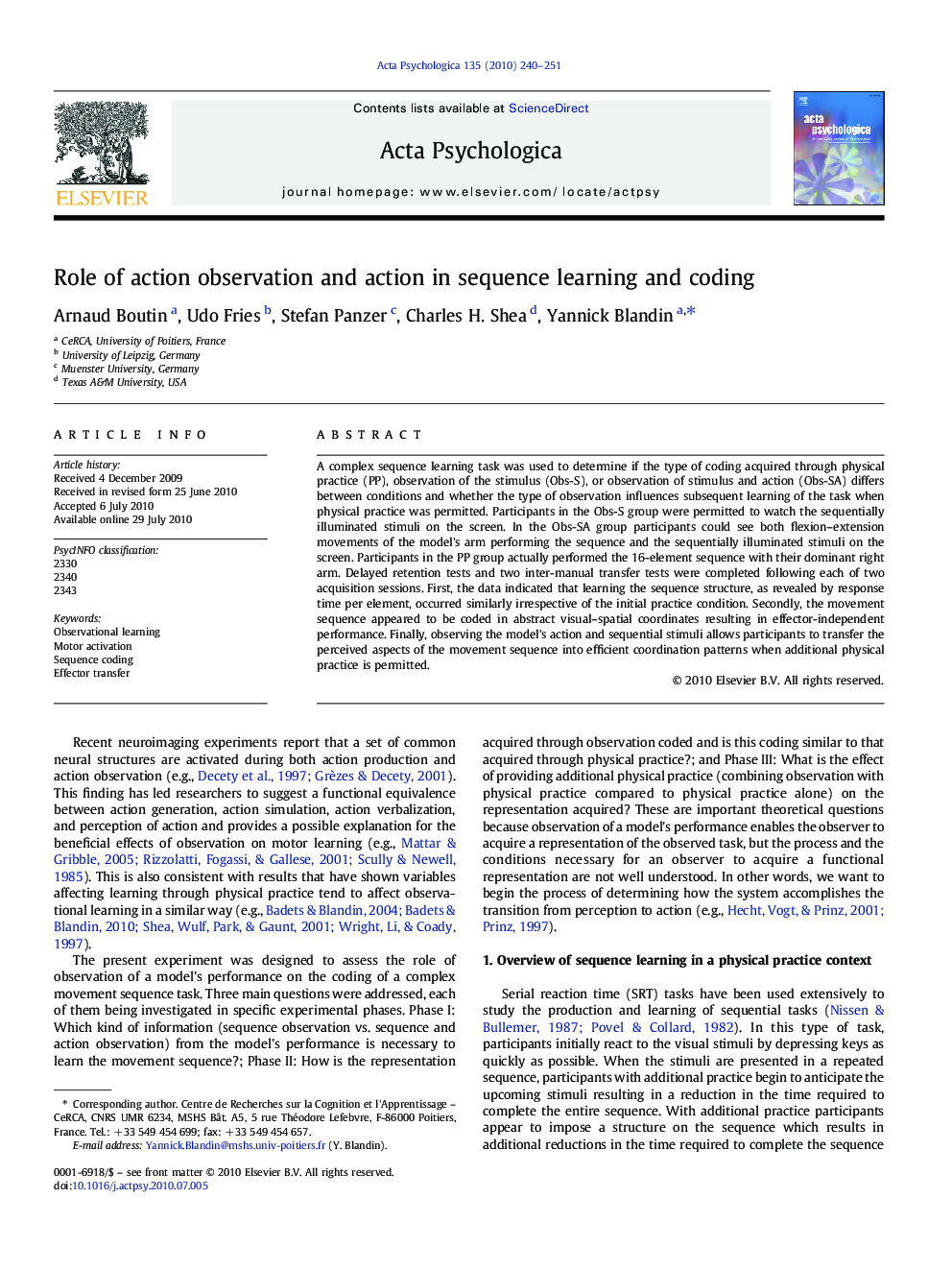| Article ID | Journal | Published Year | Pages | File Type |
|---|---|---|---|---|
| 920262 | Acta Psychologica | 2010 | 12 Pages |
A complex sequence learning task was used to determine if the type of coding acquired through physical practice (PP), observation of the stimulus (Obs-S), or observation of stimulus and action (Obs-SA) differs between conditions and whether the type of observation influences subsequent learning of the task when physical practice was permitted. Participants in the Obs-S group were permitted to watch the sequentially illuminated stimuli on the screen. In the Obs-SA group participants could see both flexion–extension movements of the model's arm performing the sequence and the sequentially illuminated stimuli on the screen. Participants in the PP group actually performed the 16-element sequence with their dominant right arm. Delayed retention tests and two inter-manual transfer tests were completed following each of two acquisition sessions. First, the data indicated that learning the sequence structure, as revealed by response time per element, occurred similarly irrespective of the initial practice condition. Secondly, the movement sequence appeared to be coded in abstract visual–spatial coordinates resulting in effector-independent performance. Finally, observing the model's action and sequential stimuli allows participants to transfer the perceived aspects of the movement sequence into efficient coordination patterns when additional physical practice is permitted.
